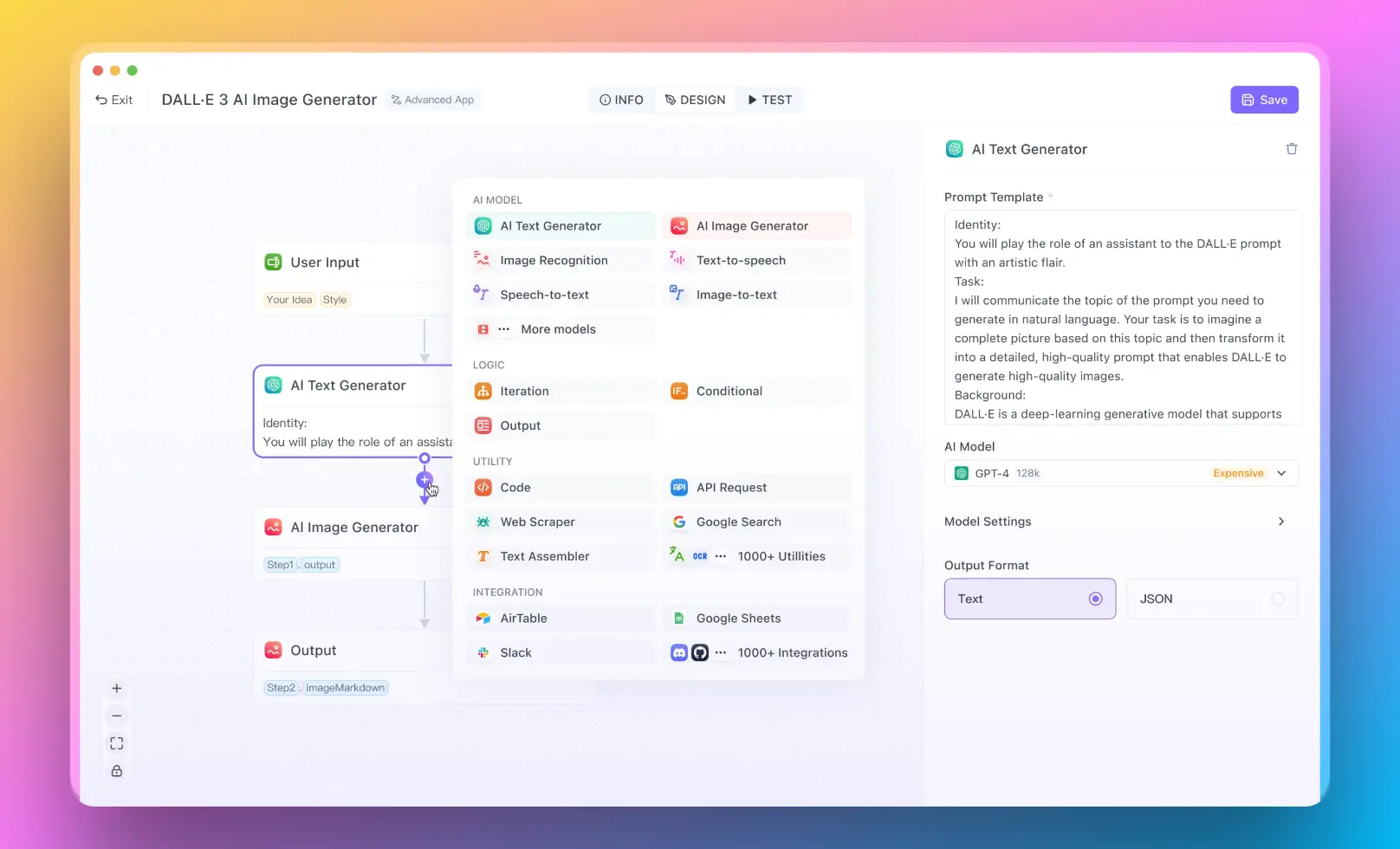In the realm of data analysis and management, the ability to export data from SQL databases to CSV (Comma-Separated Values) format is a crucial skill. CSV files are widely used for their simplicity, portability, and compatibility with various applications and tools. Whether you need to share data with colleagues, import it into spreadsheet software like Excel, or integrate it with other systems, exporting SQL data to CSV is a versatile and powerful technique. In this article, we'll explore different methods to export SQL data to CSV, along with step-by-step instructions, sample codes, and best practices.
Anakin AI is the Best AI Automation Platform for your AI Automation!
Connect Your Google Sheets to Anakin AI, and build a Customized Workflow with a No Code AI App Builder!
👇👇

Method 1: Exporting SQL Query Results to CSV
One of the most common scenarios is exporting the results of an SQL query to a CSV file. This method is particularly useful when you need to extract specific data from your database based on certain criteria or filters.
Steps:
- Open your SQL client or database management tool (e.g., SQL Server Management Studio, MySQL Workbench, or pgAdmin).
- Connect to your database server and select the desired database.
- Write your SQL query to retrieve the data you need. For example:
SELECT *
FROM Customers
WHERE Country = 'USA';
- Execute the query to retrieve the results.
- Right-click on the query results and select "Save Results As..." or a similar option.
- In the save dialog, choose the file type as "CSV" (comma-separated values).
- Specify the file name and location, and click "Save."
Your SQL query results will now be saved as a CSV file, which you can open and work with in various applications or tools.
Method 2: Exporting an Entire SQL Table to CSV
In some cases, you may need to export an entire SQL table or view to a CSV file. This method is useful when you want to create a backup or archive of your data, or when you need to share the complete dataset with others.
Steps:
- Open your SQL client or database management tool.
- Connect to your database server and select the desired database.
- Right-click on the table or view you want to export, and select "Tasks" or a similar option.
- Choose "Export Data" or "Export to File."
- In the export wizard, select the destination file type as "CSV."
- Specify the file name and location, and click "Next."
- Configure any additional options, such as column headers or data formatting, if needed.
- Click "Finish" to export the data to a CSV file.
Once the export is complete, you can open the CSV file and work with the data as needed.

Method 3: Using SQL Server Management Studio (SSMS)
If you're working with Microsoft SQL Server, you can use SQL Server Management Studio (SSMS) to export data to CSV files. SSMS provides a user-friendly interface and additional options for configuring the export process.
Steps:
- Open SQL Server Management Studio and connect to your SQL Server instance.
- In the Object Explorer, navigate to the database and table or view you want to export.
- Right-click on the table or view and select "Tasks" > "Export Data."
- In the Export Data wizard, select the destination file type as "Flat File Source" or "CSV."
- Specify the file name and location, and click "Next."
- Configure any additional options, such as column mappings, data formatting, or file options.
- Click "Finish" to export the data to a CSV file.
Method 4: Using Command-Line Tools
If you prefer a more programmatic approach or need to automate the export process, you can use command-line tools like sqlcmd (for SQL Server) or mysqldump (for MySQL) to export SQL data to CSV files.
Example: Using sqlcmd (SQL Server)
sqlcmd -S server_name -d database_name -Q "SELECT * FROM table_name" -o output_file.csv -s"," -h-1
-S: Specifies the SQL Server instance name.-d: Specifies the database name.-Q: Specifies the SQL query to execute.-o: Specifies the output file name and path.-s",": Sets the column separator to a comma.-h-1: Suppresses the column header row.
Example: Using mysqldump (MySQL)
mysqldump -u username -p database_name table_name --fields-terminated-by="," --lines-terminated-by="\n" > output_file.csv
-u: Specifies the MySQL username.-p: Prompts for the password.database_name: Specifies the database name.table_name: Specifies the table name to export.--fields-terminated-by=",": Sets the field separator to a comma.--lines-terminated-by="\n": Sets the line terminator to a newline character.> output_file.csv: Redirects the output to a CSV file.
Best Practices and Considerations
When exporting SQL data to CSV files, it's essential to follow best practices to ensure data integrity and efficient processing:
Validate Data: Before exporting, validate the data to ensure it adheres to the expected format and structure. This can help prevent errors and data corruption.
Handle Encoding and Special Characters: Pay attention to character encoding and special characters in your data. Ensure that the encoding is correctly specified during the export process to avoid data loss or corruption.
Optimize Export Performance: For large datasets, consider optimizing the export process by disabling indexes, foreign key checks, and other constraints temporarily during the export. Re-enable them after the export is complete.
Backup Data: Always create a backup of your database before performing any significant data export or modification. This will allow you to recover your data in case of any issues or errors during the export process.
Monitor Export Progress: For large datasets, monitor the export progress and allocate sufficient resources (memory, CPU, disk space) to ensure a smooth and efficient export process.
Automate and Schedule Exports: If you need to export SQL data regularly, consider automating the process using scripts or scheduling tools to streamline the workflow and reduce manual effort.
By following these methods and best practices, you can seamlessly export SQL data to CSV files, enabling efficient data sharing, analysis, and integration with various applications and tools.
One-sentence description: Unlock the power of effortlessly exporting SQL data to CSV with this comprehensive guide, featuring step-by-step instructions, sample codes, and best practices for efficient data management and portability.
FAQ: Exporting SQL Data to CSV
Can I convert SQL file to CSV?
Yes, you can convert an SQL file to a CSV (Comma-Separated Values) file. SQL files typically contain SQL scripts or database backups, which can be exported or converted to CSV format for data analysis, sharing, or integration with other applications.
To convert an SQL file to CSV, you can follow these general steps:
- Open your SQL client or database management tool.
- Connect to your database server and select the desired database.
- Execute the SQL script or restore the database backup from the SQL file.
- Once the data is available in the database, use the appropriate method (e.g., SQL query, export wizard, command-line tools) to export the desired tables or data to CSV files.
How do I backup SQL database to CSV file?
To backup an SQL database to a CSV file, you can follow these steps:
- Open your SQL client or database management tool.
- Connect to your database server and select the desired database.
- Right-click on the database or individual tables you want to backup, and select "Tasks" or a similar option.
- Choose "Export Data" or "Export to File."
- In the export wizard, select the destination file type as "CSV."
- Specify the file name and location, and click "Next."
- Configure any additional options, such as column headers or data formatting, if needed.
- Click "Finish" to export the data to a CSV file.
Repeat this process for each table or view you want to include in the backup, or export the entire database to multiple CSV files.
How to automatically save SQL query results to .CSV file?
To automatically save SQL query results to a CSV file, you can use scripting or automation tools. Here's an example using the sqlcmd command-line tool for SQL Server:
- Open a text editor and create a new file (e.g.,
export_query.bat). - Add the following code to the file, replacing the placeholders with your actual values:
sqlcmd -S server_name -d database_name -Q "SELECT * FROM table_name" -o output_file.csv -s"," -h-1
- Save the file.
- You can now run this batch file or script to automatically execute the SQL query and save the results to a CSV file (
output_file.csv).
For other database systems or programming languages, you can use similar approaches by leveraging their respective command-line tools or libraries.
How do I export SQL results to Excel?
To export SQL results to Excel, you can follow these steps:
- Open your SQL client or database management tool.
- Connect to your database server and select the desired database.
- Write your SQL query to retrieve the data you need.
- Execute the query to retrieve the results.
- Right-click on the query results and select "Save Results As..." or a similar option.
- In the save dialog, choose the file type as "Excel Workbook" or "CSV" (comma-separated values).
- Specify the file name and location, and click "Save."
Your SQL query results will now be saved as an Excel file or a CSV file, which you can open and work with in Excel.
